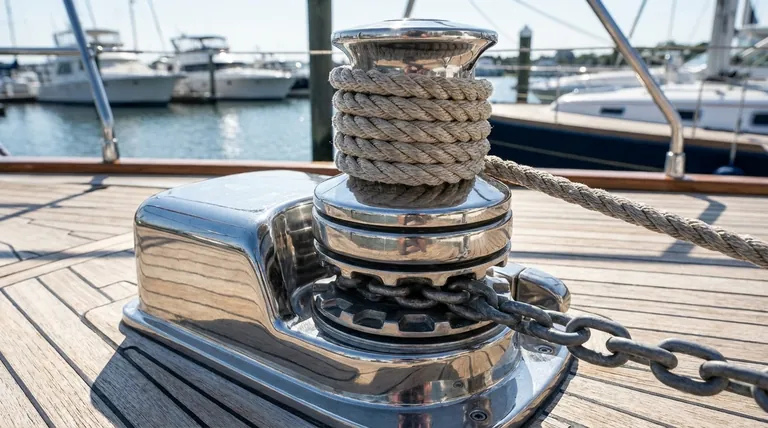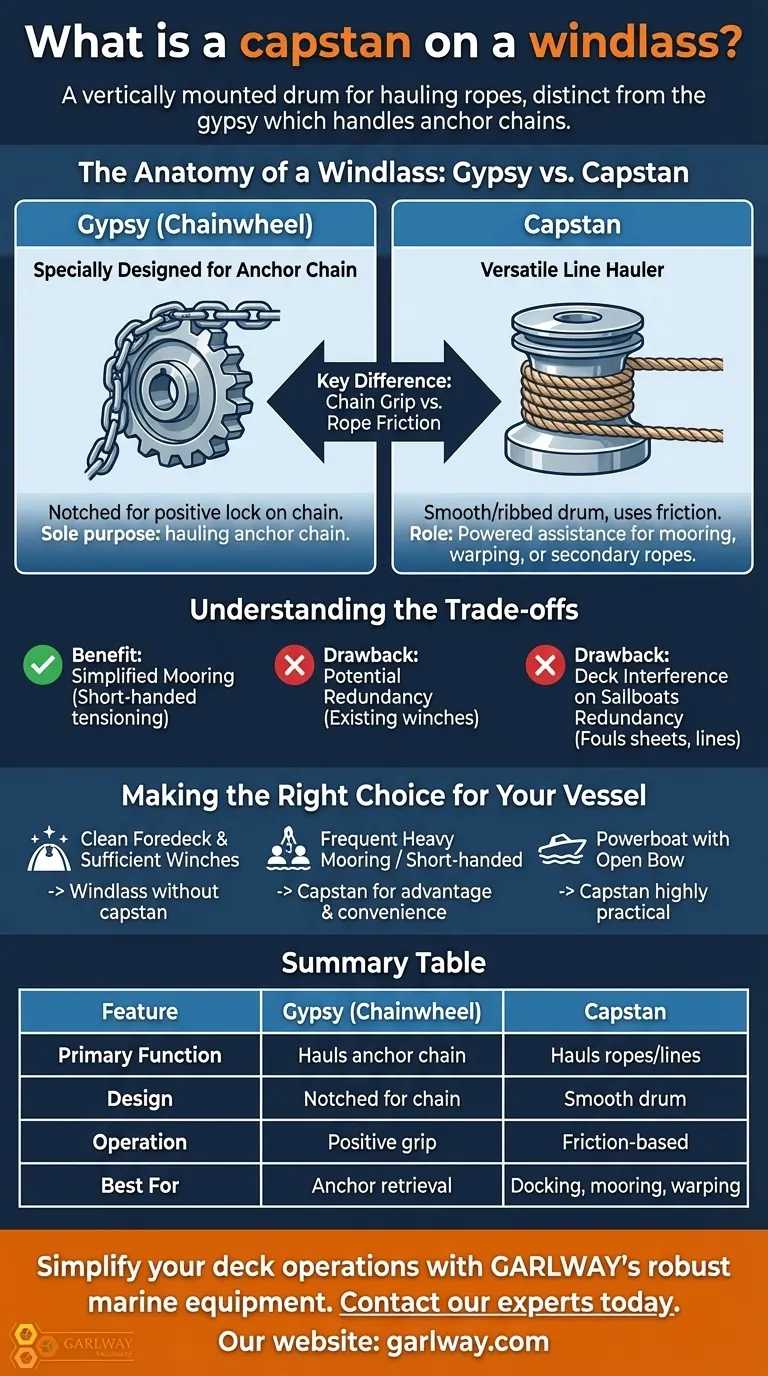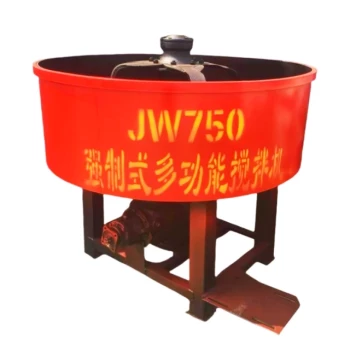In simple terms, a capstan on a windlass is a separate, vertically mounted drum designed specifically for hauling ropes. While the main part of the windlass (the gypsy) is notched to grip the anchor chain, the capstan provides a smooth surface to add power and control when pulling lines, such as those used for docking.
The core function of a windlass is to manage the anchor chain. Adding a capstan expands its utility, turning it into a multi-purpose deck machine for handling any heavy line, but its necessity depends entirely on your boat's existing equipment and layout.

The Anatomy of a Windlass: Gypsy vs. Capstan
To understand the capstan's value, it's essential to distinguish it from the windlass's primary component.
The Gypsy's Sole Purpose: The Anchor Chain
The gypsy (or chainwheel) is the specially designed wheel with teeth-like notches. These notches are calibrated to fit your anchor chain's specific link size, ensuring a secure, non-slip grip as the chain is retrieved.
The gypsy is a specialist, built for one job only: pulling the anchor chain horizontally toward the boat.
The Capstan's Role: A Versatile Line Hauler
The capstan is a smooth or lightly ribbed drum that sits above the gypsy. It works by friction; you wrap a rope (or "line") around it several times.
When the motor is engaged, the capstan turns, allowing you to pull in a heavy line with minimal physical effort. It's a general-purpose tool for any rope-handling task at the bow.
A Key Functional Difference
The windlass motor drives both components, but their applications are distinct. The gypsy provides a positive lock on the chain for anchoring, while the capstan offers powered assistance for mooring, warping the boat, or handling a secondary rope anchor.
Understanding the Trade-offs
Adding a capstan seems like an obvious upgrade, but it comes with clear trade-offs that must be considered.
Benefit: Simplified Mooring
For a skipper who is docking short-handed, a capstan is invaluable. It allows one person to easily tension heavy mooring or spring lines without having to lead them back to a cockpit winch.
Drawback: Potential Redundancy
Many boats, particularly sailboats, are already equipped with powerful winches. If you have suitably located winches that can handle mooring lines, a capstan on the windlass may be an unnecessary expense and complication.
Drawback: Deck Interference on Sailboats
On a sailboat's foredeck, space is at a premium. A capstan can create a significant hazard by fouling headsail sheets, spinnaker lines, or furling lines. Its presence can complicate tacking and other sail-handling maneuvers.
Making the Right Choice for Your Vessel
The decision to include a capstan should be based on a clear assessment of your boat and how you use it.
- If your primary focus is a clean foredeck and you have sufficient winches: A windlass without a capstan is simpler, less expensive, and avoids potential line-snagging issues.
- If you frequently handle heavy mooring lines or dock short-handed: A capstan provides a significant mechanical advantage and convenience that can make docking safer and less stressful.
- If you have a powerboat with an open bow: The risk of interference is much lower, making a capstan a more straightforward and highly practical addition for line handling.
Ultimately, choosing the right equipment comes down to understanding your specific operational needs and your vessel's unique layout.
Summary Table:
| Feature | Gypsy (Chainwheel) | Capstan |
|---|---|---|
| Primary Function | Hauls anchor chain | Hauls ropes/lines |
| Design | Notched for specific chain | Smooth or ribbed drum |
| Operation | Positive grip on chain | Friction-based (rope wraps around) |
| Best For | Anchor retrieval | Docking, mooring, warping |
Simplify your deck operations with GARLWAY's robust marine equipment. Whether you're a commercial contractor or a boat builder, our deck machinery is engineered for reliability and power in demanding conditions. Let us help you specify the right windlass and capstan system for your vessel's needs. Contact our experts today to discuss your project and get a personalized solution!
Visual Guide

Related Products
- Ready Mixer Machine for Construction Ready Mix Machinery
- Hydraulic Concrete Mixer Machine Cement Mixing Equipment for Mixture Concrete
- Commercial Construction Mixer Machine for Soil Cement Mixing Concrete
- Electric Hoist Winch Boat Anchor Windlass for Marine Applications
- Warn Winch Windlass Boat Trailer Winch
People Also Ask
- What should be considered regarding the output of a concrete mixer? Match Capacity to Your Project Scale
- Can a concrete mixer be used for mortar? Understanding the trade-offs for your project
- What is the function of a concrete mixer machine? Achieve Consistent, High-Quality Concrete for Your Projects
- What was significant about Roscoe Lee's 1934 concrete mixer design? Pioneering Modular Construction Equipment
- Which type of projects require a concrete mixer? Essential Guide for Construction Pros


















